As India Turns 75, Here's 75 Debates for Argumentative Indians
This list is intended to provoke debate and disagreement–even consternation– rather than to be definitive. It is entirely personal, drawn up by a 60-year-old who was born just before the war with China; who left India at around the time the first Janata Party government was collapsing; and who has never, for all his years abroad, ceased to support the Indian cricket team.
In it, I nominate one person, object or event as the most consequential in a set of different categories. Some nominations are whimsical, some much less so.
POLITICS & STATECRAFT
1. Prime Minister: P.V. Narasimha Rao—The unlikely saviour of modern India, he rescued the country from imminent and possibly irreparable bankruptcy with his economic reforms, enabling us to grow at a rate that had previously seemed inconceivable.
2. President: K.R. Narayanan—A president of quiet and steely dignity at a time of intense political upheaval, he played the impeccable constitutional umpire, drawing all the while on his skills as a diplomat and his own impressive personal integrity.
3. Chief Minister: K. Kamaraj—A Tamil titan, and the penultimate Congress chief minister in a state where power has been exclusively with Dravidian parties since 1967, he was an exemplar of the federalist nature of the Indian Constitution as conceived by its framers. Also promoted mid-day meals for school students.
4. Governor: Anthony Lancelot Dias—A forgotten figure today, he was the sophisticated governor of a politically contrarian border state (West Bengal) at a time of great domestic and international volatility, offering a model for noninterventionist but sage stewardship that our present-day governors would do well to emulate.
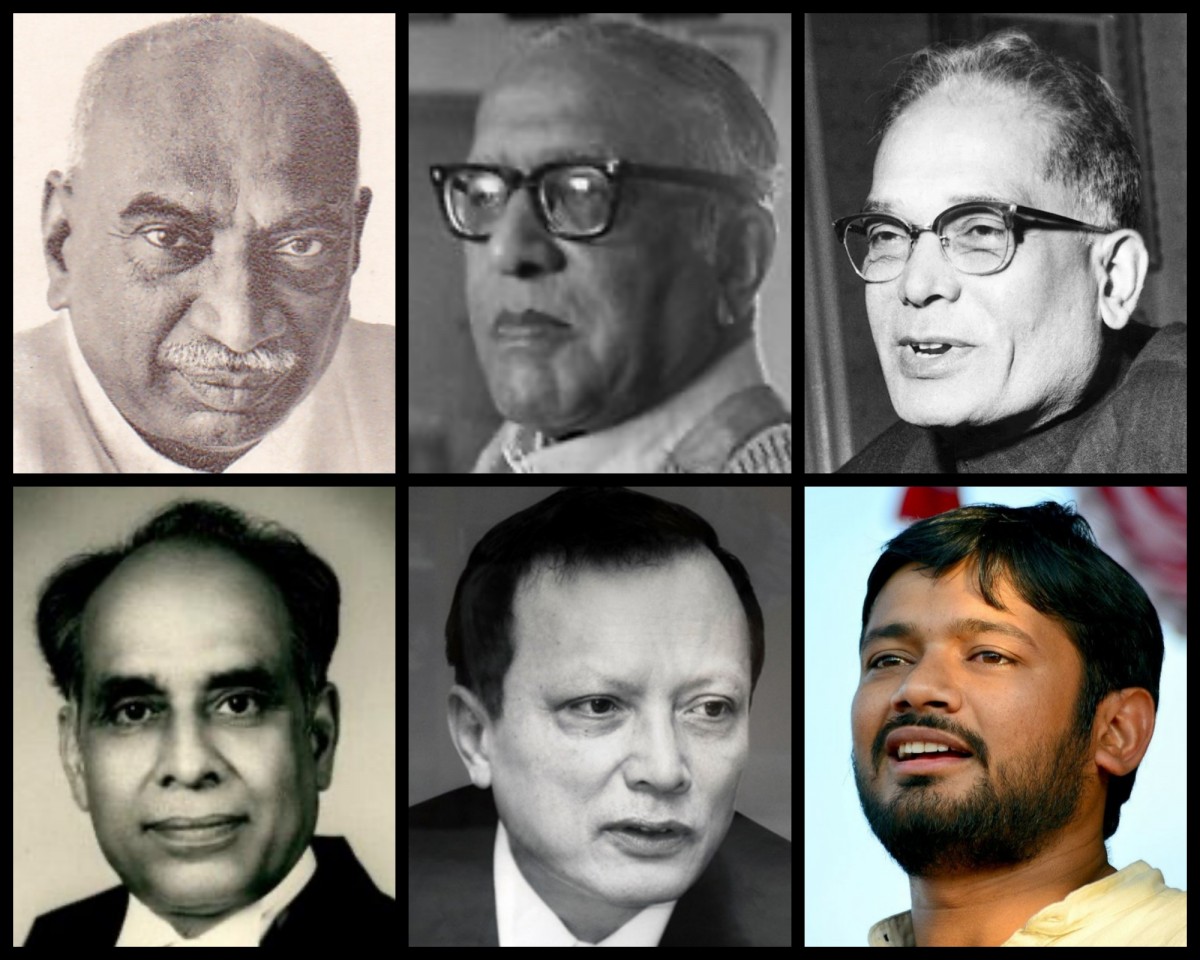
Clockwise from top left to right: K. Kamaraj, Anthony Lancelot Dias, Jayaprakash Narayan, Justice H.R. Khanna, J.M. Lyngdoh, Kanhaiya Kumar. Photos: Wikimedia
5. PM India never had: Vallabhbhai Patel—This nomination is wholly uncontroversial: Patel was a formidable statesman. Sadly, he predeceased Nehru but a term or two in the highest political office would have denied present-day Hindutva apologists of their most cherished counterfactual narrative—that he was at odds with his own Congress Party.
6. Opposition leader: Jayaprakash Narayan—JP saved Indian democracy from potential death-by-Emergency. Period.
7. Supreme Court judge: Hans Raj Khanna—For his lone dissent in a Supreme Court decision that suspended the right of habeas corpus during Indira Gandhi's emergency, the New York Times wrote that "someone will surely erect a monument to Justice H.R. Khanna."
8. Election commissioner: James Michael Lyngdoh–He supervised the conduct of elections in India with a courteous but adamant adherence to the rules, and did so without any of the unnecessary showboating of the more celebrated T.N. Seshan.
9. Hindutva leader: Atal Bihari Vajpayee—As prime minister he surprised even his opponents with his equanimity and sense of fair-play, proving surprisingly secular (for an RSS man, that is), with little of the inclination shown by his successors to bludgeon the country's minorities.
10. Orator: Kanhaiya Kumar–This JNU firebrand leapt into India’s consciousness with a series of impromptu public speeches–recorded by bystanders and spread on YouTube and WhatsApp–that electrified listeners with the audacity of his language and the freshness of his militant vocabulary.
11. Slogan: Talk Less, Work More—Coined by Sanjay Gandhi and consequential because it epitomised the bankruptcy of the Emergency and presaged Indira’s ignominious defeat when elections were eventually held in 1977.
12. State: Kerala–Tolerant and educated, this state offers a model of civilised living to other states, even to those who don’t have Kerala’s advantages: a high female literacy rate, large remittances from workers in the Gulf, and an enviable tradition of religious coexistence.
DIPLOMACY & SECURITY
13. Diplomat: K.P.S. Menon—India's first foreign secretary, he was the pilot of a callow India's foreign policy in its first sortie into the world of international relations, and Prime Minister Nehru's co-pilot in the journey to nonalignment.
14. Defence strategist: K. Subrahmanyam—The Father of Indian grand strategy, he was the first Indian defence consigliere to embrace Realpolitik and was the brains behind India's nuclear doctrine, including the country's "No first use" policy.
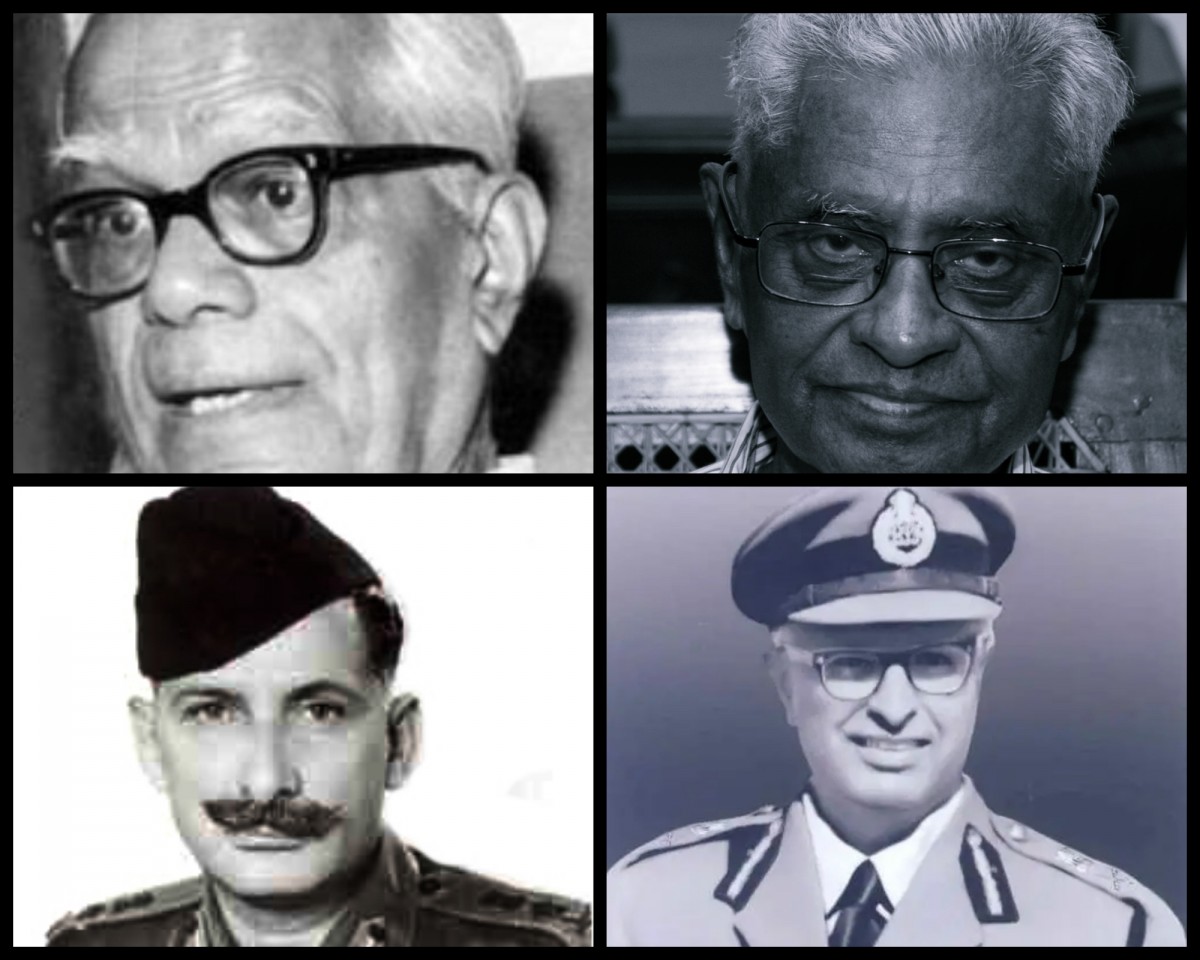
Clockwise, left to right: K.P.S. Menon, K. Subrahmanyam, K.F. Rustamjee and Field Marshal Sam Manekshaw. Photos: Wikimedia
15. General: Sam Manekshaw—Predictable, of course, that we reach here for the name of "Sam Bahadur," but India has never had a military leader quite as accomplished since Hari Singh Nalwa commanded the troops of Maharaja Ranjit Singh.
16. Top cop: Khusro Faramurz Rustamji–A name that should have readers reach for their history books, he crowned his distinguished tenure as a police chief with a series of proposed reforms – which successive governments chose to ignore, and successive top cops preferred not to pursue.

Albert Ekka. Photo: honourpoint.in
17. Param Vir Chakra winner: Albert Ekka—This is an invidious category, I'll admit, for each winner is a warrior without equal, but there is something truly special about an Adivasi man laying down his life in stirring battle for a country that won't treat his own people with dignity.
18. Military Battle: Rezang La—This was a defeat in the India-China War of 1962, but the battle has always stood as an example of the valour under pressure of the Indian soldier, here shown by outnumbered, underequipped jawans, fighting a larger Chinese force to the last man.
19. Neighbour: Bangladesh–Indians have a tendency to look down on Bangladesh, and our political establishment is frequently guilty of Bangla-bashing. Which is perplexing, as that country–at least under Awami League governments–is an unwavering friend of India. This erstwhile “basket case” also has lessons to teach India, its social indices having come to be notably better than ours.
20. International ally: The Soviet Union–For decades India’s protector and chaperone in the Big Bad World, the Soviet Union was thought to offer India a counterweight to a perceived American bias toward Pakistan. The old loyalty persists, alas, in the form of a dalliance with Putin’s Moscow. Old habits die hard.
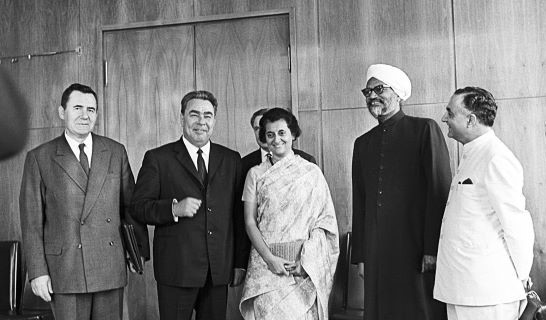
Soviet leaders Alexei Kosygin and Leonid-Brezhnev with Indira Gandhi, Swaran Singh and T.N.Kaul. Photo: Soviet Land
21. Pakistani Prime Minister: Nawaz Sharif–Tempting though it may be to thank Zulfiqar Ali Bhutto for handing Bangladesh to India on a platter, Nawaz Sharif must count as the Pakistani PM with whom India worked best. A consummate Punjabi, he understood both post-Partition sensitivities as well as the importance of cross-border trade and commerce.
22. U.S. President: George W. Bush—Yes, Bill Clinton broke the ice with India as no U.S. president before him had done, but it was Dubya who gave India a breathtaking nuclear deal—which India continues to squander—while paving the way for a strategic alliance with Washington that can get as intimate as India wants it to be.
CULTURE
23. Novel: "The Guide", by R.K. Narayan—A book of calm beauty, written with the sort of contemplativeness and verbal economy that gave way, with later Indian writers in English, to a more showy form of prose.
24. Poet: Amrita Pritam—The first woman to win the Sahitya Akademi Award, this Punjabi captured in her poems the anguish of Partition ('Ajj aakhaan Waris Shah nu') as well as themes of sexuality and female emancipation that were notably daring for a woman of her era and milieu.
25. Film song: "Mera Joota Hai Japani," from Shree 420—A song of lilting perfection and exquisite message from an age when Indian cinema and its music were gentle and—yes—altogether more wholesome.
26. Film: Sholay—An unabashed blockbuster that broke new technical and narrative ground, this "curry Western" kept India's spirits up during the years of the Emergency, distracting us with its panache from the realities that confronted us outside the escapist world of the cinema hall.
27. Bollywood actor: Dev Anand—If Dilip Kumar embodied loss and Raj Kapoor a certain sadness, Dev Anand the optimist greeted adversity with a smile. Moving ahead was his only motto, and the future, with him, was most certainly better. Mein zindagi ka saath nibhata chala gaya, hur fikr ko dhuein mein udata chala gaya. This was Dev Anand a few years after independence, reflecting the never-say-die spirit of a people who don’t want drama but a modern spirit.
28. Bollywood villain: Ajit (né Hamid Ali Khan)—The Bad Guy par excellence, with his preposterous dyed hair and his menacing diction, he started his acting career as a romantic hero but best personified the villain in an era when there was no crime worse in protectionist India than smuggling goods from abroad.
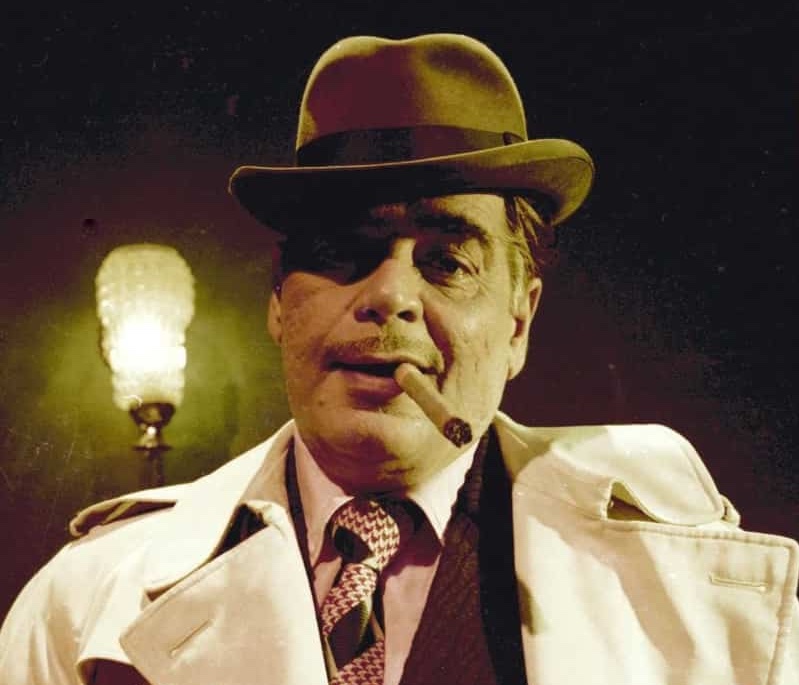
Bollywood actor Ajit
29. Bollywood actress: Rekha—Dusky in an industry which was (and is) as colour-conscious as Jim Crow America, she brought a smouldering glamour and histrionic range to her performances on the screen that few actresses after her have been able to match.
30. Non-Bollywood actor: Rajnikanth—The South has a vice-like grip on this category, and tempting though it may be to nominate MGR, "Super Star" Rajnikanth—born Shivaji Rao Gaekwad—is an irresistible winner.
31. Non-Bollywood actress: Madhabi Mukherjee—This delicate and understated Bengali has no equal as an actress in Indian cinema, her roles in Satyajit Ray's "Mahanagar" and "Charulata" being among the finest performances in world cinema in the 1960s.
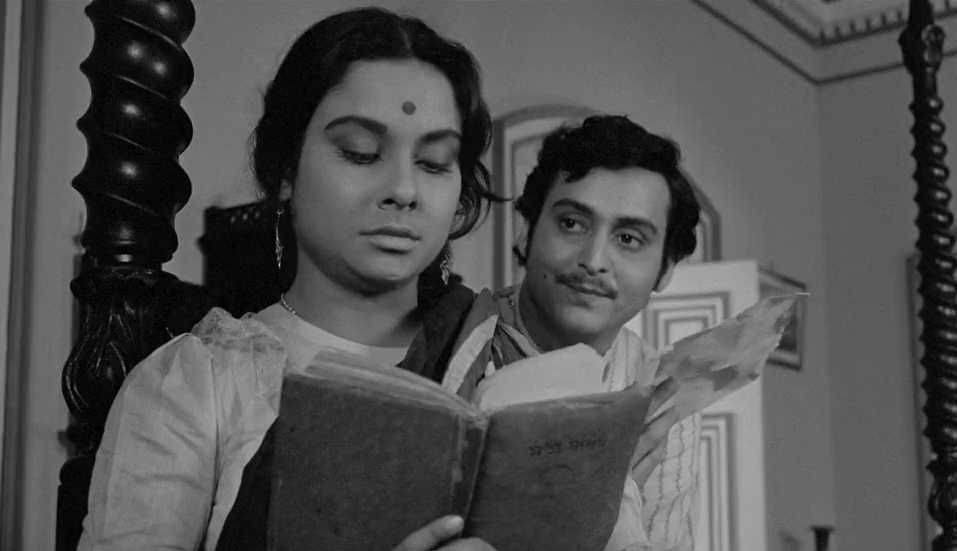
Madhabi Mukherjee and Soumitra Chatterjee in 'Charulata' (1964). Credit: IMDB
32. Film director: Satyajit Ray—In Indian cinema, certain matters are beyond dispute. This is one.
33. Hindustani vocalist: Kumar Gandharva—It breaks the heart to have to pick one singer: why not Mallikarjun Mansur? Bhimsen Joshi? Malini Rajurkar? Yet Kumar Gandharva is my choice for those for whom music is, above all, a spiritual experience.
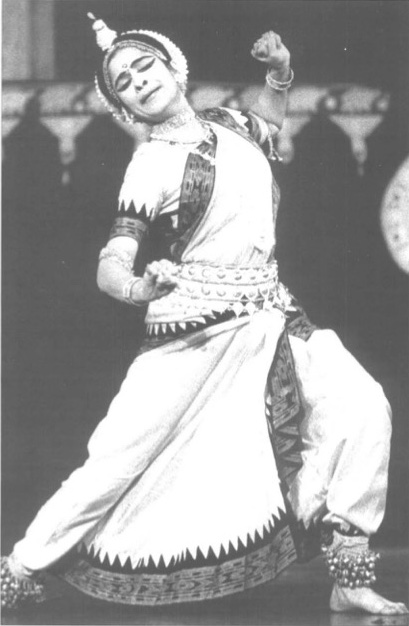
Sanjukta Panigrahi. Photo: From Julia Varley, 'Sanjukta Panigrahi: Dancer for the Gods', New Theatre Quarterly, 2009.
34. Hindustani instrumentalist: Bismillah Khan—His was not only the most difficult instrument (arguably) on which to attain perfection, it was also one that he elevated into the classical pantheon. Bismillah redefined the shehnai.
35. Male playback singer: Mohammed Rafi—The perfect Punjabi tenor, Rafi never had to rely on vocal gimmicks such as yodelling in the manner of Kishore Kumar. The purity of his voice was always sufficient.
36. Female playback singer: Asha Bhosle—The sexiest of the playback singers of her generation, Asha always sounded like a real, adult woman, unlike her more celebrated sister Lata, whose voice, while technically pure, was arrested in a permanently adolescent pitch.
37. Classical dancer: Sanjukta Panigrahi—In a land of sublime dancers and dance forms, she must stand out for singlehandedly reviving and reinventing the Odissi idiom, which arguably would not exist today but for her efforts.
38. Carnatic instrumentalist: Kunnakudi Vaidyanathan—Who can resist his showmanship, his flights of fancy, his sheer genius on the violin. When he plays, it is hard to believe that the violin came to India with the East India Company in the late 18th century, and that it was not conceived in a kuppam or agraharam in the Tamil country.
39. Carnatic vocalist: D.K. Pattamal—A self-taught singer, she was an authority on the music of Muthuswami Dikshitar and a true revolutionary in the male-chauvinist world of Carnatic music.
40. Painter: M.F. Husain–Perhaps not the most gifted or original of India’s painters, Husain was certainly the most controversial, and came to be so without actively courting anyone’s ire. He was the helpless victim of Hindu bigots, who drove him out of the country.
41. Folk musician: Allah Jilah Bai–Well-versed in classical forms, this singer from Bikaner found her metier in folk music. Her rendition of ‘Kesariya Balam’ helped spread the sounds of Rajasthan across India and the world.
SPORTS
42. Cricket captain: Ajit Wadekar—A quirkier choice than most on this list, for he had no great philosophy of cricket; but he gave Indians the first real taste of Test victories, winning away in the West Indies and later in England, at a time when the latter still treated Indian cricket with barely disguised disdain.
43. Batsman: Virat Kohli—Let his current slump not blind us to the fact that Kohli is the most destructive, versatile, globally feared wielder of a cricket bat who has ever played for India.
44. Bowler: Jhulan Goswami—Arguably the greatest fast bowler of her generation in the women's game. In a country that was, until recently, starved of decent fast bowlers—in both men's and women's cricket—that should be enough to get her our vote.
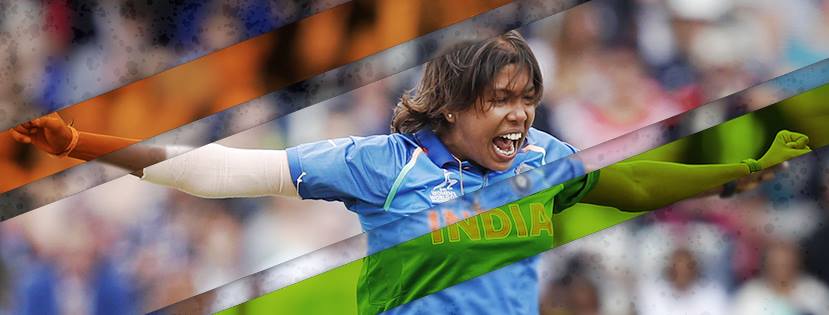
Jhulan Goswami. Photo: Facebook.
45. Cricket commentator: Ravi Chaturvedi–An unfashionable name in this era of ex-cricketers in the commentary box, Chaturvedi was the first person to commentate in Hindi–on All India Radio in 1961–and his arrival, as well as that of commentary in a language many more people understood, extended the reach of cricket to the small towns of India. And those are now the places where our best players come from.
46. Hockey player: Balbir Singh Sr.—Three Olympic gold medals: which drag-flicker da puttar would argue with that?
47. Football player: Bhaichung Bhutia—India isn't spoiled for choice in football, but Bhutia, from Sikkim, sturdy, tireless, and skillful, was the closest we've come to having a player who could hold his own on the world stage.
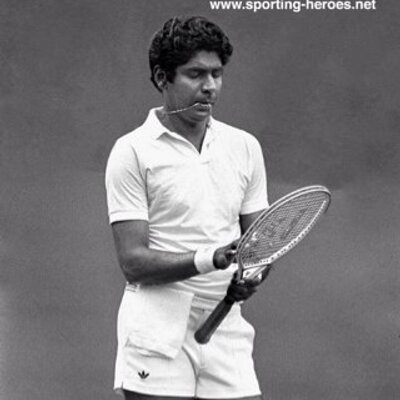
File photo of Vijay Amritraj on court. Photo: Twitter/@Vijay_Amritraj
48. Tennis player: Vijay Amritraj—He didn't win anything of note, but the exquisitely elegant Amritraj was once spoken of in the same breath as Borg and Connors—he was the "A" in the "ABC" of young tennis stars in his generation.
49. Test match win: India v. Australia, Kolkata, 2001: Among the finest victories by any Test side over another in the history of cricket, Kolkata 2001—"Laxman's Test"—was entirely improbable and also game-changing. It led, in effect, to the death of the follow-on as a strategic option.
50 Hockey victory: India v. Germany, Tokyo Olympics, 2021: This was a bronze medal worth much more than that seemingly base metal would suggest: It was India's first medal of any kind at the Olympics since its gold in a depleted field at Moscow in 1980, and allowed Indian fans to move past their nostalgia for the glory days when hockey was played on grass.
51. Game-changer: Lalit Modi–A businessman of questionable taste and standards, currently a fugitive (from Indian law-enforcement) in London, Modi was the founder of the Indian Premier League, which has turned cricket from a still-genteel game into a gaudy, gladiatorial contest. Thanks to the IPL, India now “owns” world cricket.
IDEAS
52. Historian: Romila Thapar—Her work on ancient India was as rigorous as it was accessible, now in her 90s her status as independent India’s most respected historian is unquestionable.
53. Philosopher: Bimal Krishna Matilal—The foremost logician in the Indian philosophical tradition, Matilal’s erudition was matched only by his almost painful shyness, not a good thing, necessarily, in a city full of bluster such as Oxford, where he held a chair in eastern religion and ethics once held by Sarvepalli Radhakrishnan.
54. Economist: Amartya Sen—Tempting though it is to consider him as a philosopher, Sen must be judged as he judges himself, and as an economist he has no peer among Indians—both in terms of formal accolades and in the richness and originality of his ideas.
55. Scientist: M.S. Swaminathan—An agronomist and plant geneticist, he was our very own "green revolutionary," working with Norman Borlaug on an enterprise that would ensure that a hungry India could feed itself.
56. Foreigner who changed India: Jean Dreze–A Belgian who moved to India to work as an economist and took up Indian citizenship, his work on human development, education and nutrition led him to make the case for mid-day meals for schoolchildren and an employment guarantee for the rural unemployed — measures that provide an important welfare cushion for India's poorest citizens.
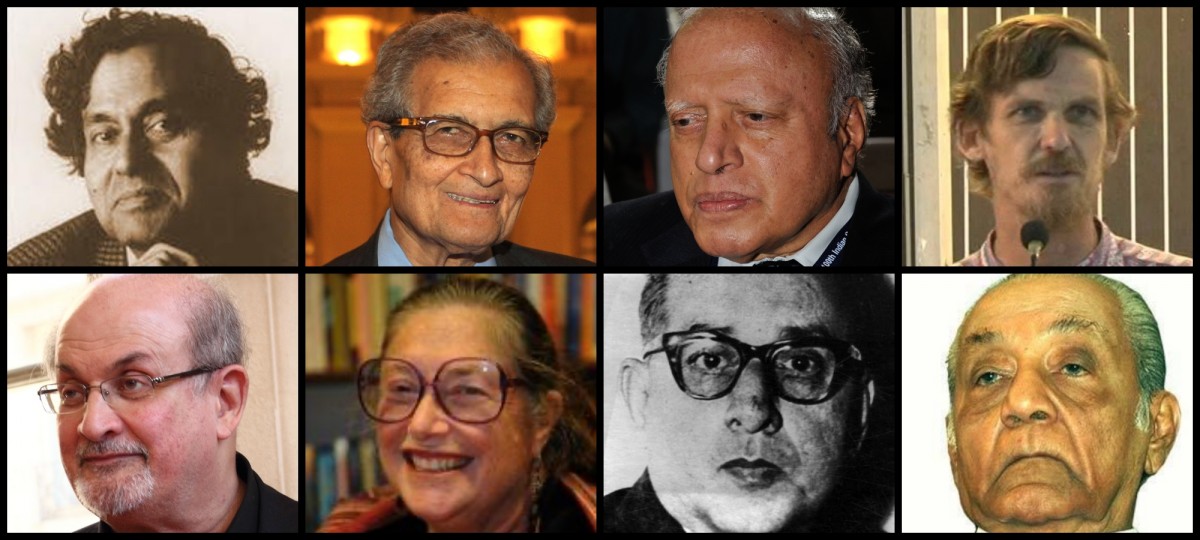
Clockwise from top left: Bimal Krishna Matilal, Amartya Sen, M.S. Swaminathan, Jean Dreze, Salman Rushdie, Wendy Doniger, S. Mulgaocar and A.G. Noorani.
57. Indian Abroad: Salman Rushdie–Tempting though it is to opt for the Pichais and the Nadelas, no Indian has had a greater impact on global culture–defined in political as well as literary terms–than Rushdie.
58. Explicator of Indian Thought: Wendy Doniger–This American scholar and Sanskritist is reviled by the Hindu right for her rigorously analytical and forthright examination of Hinduism and its sacred texts. Her book “The Hindus,” deemed blasphemous and irreverent, is banned in India.
59. University: The Indian Institutes of Technology–Conceived as temples of science by Jawaharlal Nehru, the IITs are India’s only institutions of higher learning that are even remotely world class. Competition to study there is fierce, as is the stampede out of them, upon graduation, to America.
60. Newspaper editor: Srikrishna Mulgaokar—The fearless editor of the Indian Express from 1973-81, he steered his newspaper through a torrid time for the Indian media and moulded it into a scrappy fighter for democracy.
61. Columnist: A.G. Noorani–A lawyer who found his true calling as a learned commentator and writer on an astonishingly wide range of subjects, from diplomacy and human rights to law, politics and modern history.

File photo of the Illustrated Weekly of India
62. Magazine: The Illustrated Weekly of India–Now defunct, this publication, under the editorship of Khushwant Singh, informed, amused and entertained a nation starved for respectable reading that wasn’t, at the same time, dowdy.
SOCIETY
63. Building, post-1947: Hall of Nations, by Raj Rewal, at Pragati Maidan, New Delhi–Now demolished, this was one of the few instances of original modern architecture in a land where most modern buildings are under-confident (and ugly) imitations of styles from elsewhere. Its leveling was a form of artistic murder.
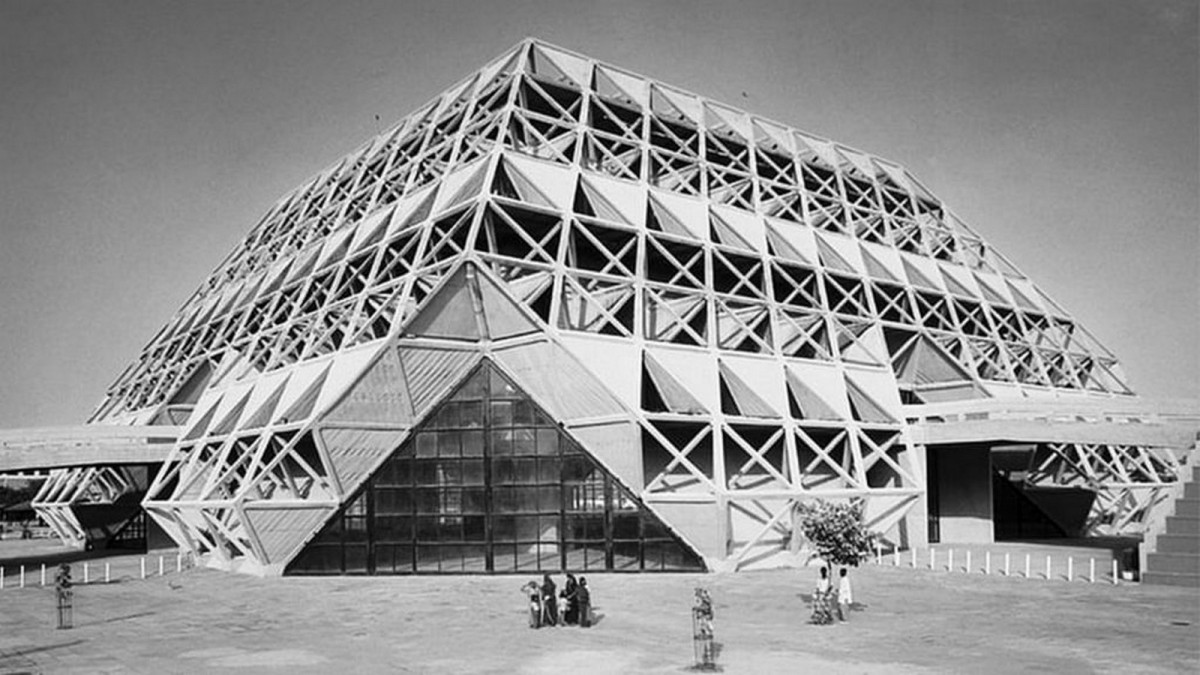
Raj Rewal's iconic Hall of Nations at Pragati Maidan in New Delhi, destroyed to make way for a new exhibition complex despite protests from architects around the world. Photo and copyright: Raj Rewal
64. Business House: Tatas–A somewhat unfashionable choice, some would say, given the blaze of new corporations and conglomerates in the land; yet Tata continues to set the bar for corporate integrity (despite taking a knock or two in that department in recent years).

Air India Maharaja ads. Collage: Seniors Today
65. Advertising campaign: The Air India Maharaja: This puckish, turbanned figure was for decades the glamorous and genial face of an increasingly dowdy and dysfunctional airline that failed to match the panache of its mascot.
66. Car: The Hindustan Ambassador–For long years the king of India’s roads, this beloved motor-car combined legendary sturdiness with a stately roundedness of design so sadly absent in any vehicle today.

One of few Ambassadors still being driven on Delhi's roads. Photo: The Wire
67. Soft drink: Rooh Afza–This sickly-sweet and crimson cordial has more than matched its competition, whether desi or foreign. Coke or Thums Up may come and go, but Rooh Afza is here forever. (Just don’t spill it on your clothes…)
68. Alcoholic beverage: Old Monk–Most urban Indians still grow up learning how to handle alcohol with a glass of this rum in their hands. It’s not subtle; it’s not refined; and it’s much too sweet, but generations of Indians have gargled it back with gratitude.
69. Chef: Tarla Dalal—Madhur Jaffrey may have cornered the international glory with her breathy TV shows and picture-laden cookbooks, but Dalal was the first Indian chef to capture the Indian imagination.
70. Criminal: Harshad Mehta–Hot on the heels of economic liberalisation came Harshad Mehta, a stockbroker who engaged in 1992 in stock manipulation of a kind never before seen in India–perverse proof, one might say, that the country was leaving its socialist ways behind.
THE POWER OF ONE
71. Human Rights activist: Hriday Nath Wanchoo–A Kashmiri Pandit who stayed in the Valley in the murderous early 1990s to document the violence by Indian security forces against his fellow Kashmiri Muslims. He was shot dead by “unidentified gunmen.”

Left: Hriday Nath Wanchoo. Photo: Kashmir Life. Right: rom Sharmila (PTI)
72. Conscience-keeper: Irom Sharmila–An activist from Manipur, Sharmila went on a hunger strike for 16 years–the Mahatma’s longest was 21 days–in protest against the Armed Forces (Special Powers) Act 1958, which gives the Indian security forces almost total impunity in its conduct of anti-insurgency operations.
73. Ordinary citizen: Shah Bano—An unlettered Muslim divorcée from Indore, she sued her husband when he abandoned her without alimony—in the process unleashing forces that would transform the politics of India and, in effect, weaken the foundations of Indian secularism.
74. Style icon: Jawaharlal Nehru--In a land of potbellied netas, Nehru stood out with his trim figure and tailored sherwanis, which evolved into the jacket that bears his name. His appearance was as flawless as his diction: Which politician today would dare wear a rose in his lapel?
75. Anthem: “Ma Tujhe Salam”—Composed in 1997 to mark India’s 50th anniversary, the words of this song and its accompanying images recall an India that was less angry, less majoritarian–and with not a synthetic “tiranga” in sight.
JAI HIND.
Tunku Varadarajan, a contributor to the Wall Street Journal, is a fellow at the American Enterprise Institute and at New York University Law School’s Classical Liberal Institute.
This article went live on August fifteenth, two thousand twenty two, at one minutes past five in the evening.The Wire is now on WhatsApp. Follow our channel for sharp analysis and opinions on the latest developments.




